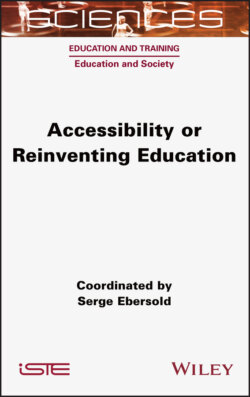Читать книгу Accessibility or Reinventing Education - Группа авторов - Страница 22
1.5. Accessibility, or the advent of new forms of normativity
ОглавлениеThe reorganization of the legitimacy of schools around the fight against institutional discrimination makes the implementation of the imperative of accessibility dependent on its cultural anchoring, that is the symbolic and practical framework created by schools to legitimize it in the light of the institutional, organizational and individual issues at stake. This symbolic and practical environment is the result of the forms of agreement established by school actors to build a collective sense of accessibility within the educational community and to create the conditions necessary for its inclusion in the social games that govern its functioning. These forms of agreement have the virtue of transcending personal interests and making explicit the symmetrical and practical elements common to all of the actors. They form a system by making explicit the common action pursued, by specifying the levels of complementarity and by defining the standards and rules to be respected. They are institutional actions that bring into play the accessibility issue and the conditions for its implementation. Social meanings, as well as the ways of understanding the world that they bring about, anchor interactions between individuals in a relationship of institutional, organizational and functional interdependence, making it possible to create an environment by acting jointly on individual and collective dimensions.
These forms of understanding are organized around the organizational anchoring of accessibility through school policies. Many countries encourage schools to showcase school diversity, as is the case in Italy, France and Norway, by making inclusive education one of the components of their school policy. It is thus up to them to qualify the organizational meaning of accessibility and, correlatively, to promote institutional normativity based on consideration of the heterogeneity of learners’ profiles and school contexts. The collective sense of accessibility promoted by these policies presides over the school climate prevailing in the schools and over the expectations of members of the school community in relation to learners. It establishes an ethical climate that influences the pedagogical choices of professionals and the level of commitment of staff to the success and well-being of every individual: oriented towards taking into consideration the diversity of profiles and needs, these forms support pedagogical practices that combine high expectations and requirements (Duru-Bellat 2002); conversely, they also encourage subcontracting strategies that delegate the treatment of academic difficulties to disability specialists when priority is given to adapting students to the curriculum (Ebersold et al. 2019). The collective sense of accessibility asserted by school policies also influences the strategies of students and their families: by focusing on accommodating school diversity, they encourage students with less visible conditions to disclose their particularity and thus access the support and arrangements to which they are entitled; and they encourage them to develop avoidance strategies that deprive them of the media they need when they do not.
These forms of understanding are also organized around a functional anchoring of accessibility. This anchoring takes into account the identity-related issues surrounding openness to diversity and connects them with the division of tasks and the distribution of roles between the different actors, and the approaches to support and accommodation (Ebersold 2008). It consists of school principals making explicit an inclusive ethos that encourages members of the school community to see the diversity of cognitive profiles as a resource that benefits everyone and to work to reduce barriers to learning for all students in order to prevent academic failure (Downes et al. 2017). This ethos can, for example, support the generalization of collaborative practices that allow the school community to correlate the personalization of practices with opportunities for the personal and professional development of members of the educational community (Gartin et al. 1992). This functional anchoring of accessibility is also organized around managerial strategies aimed at empowering actors in the school community in the success and well-being of each pupil by promoting, for example, the early identification of learners facing difficulties and allowing teachers to have sufficient mastery of the different conditions and situations to make their teaching practices accessible (Endrizzi and Thibert 2012; Delaubier and Saurat 2013). This functional anchoring is further organized around managerial strategies that are sources of synergy between actors in the school and in the special provision and are conducive to the establishment of cooperation that provides adequate support for pupils throughout their school career, but also for teachers in the implementation of the principles of inclusive pedagogy (Kollias 2015).
Far from being decreed or imposed, the implementation of the accessibility imperative depends on the self-regulatory activity of the institutions. This activity conditions the cultural anchoring of accessibility within schools, as well as the organizational, functional and experiential processes through which individual particularities are taken into account and practices are adapted. The concretization of the accessibility imperative is organized around the conventions established by the school actors to define the meaning of the accessibility imperative and to set out the conditions for its concretization (Ebersold 2008). These conventions express forms of agreement likely to transcend personal interests and to make explicit the symbolic and practical elements common to the actors. They form a system by explaining the greater common good pursued, specifying the levels of complementarity, defining the standards and rules to be respected, and so on (Ebersold 2008). They are institutional acts through which school practices are defined, justified and materialized: they are at the heart of the consensus on the meaning of diversity and, correlatively, of its organizational and functional anchoring; and they condition the forms of leadership assumed by principals, the prevailing conceptions of education for pupils, the components specifying the role of the pupil and, as a result, the understanding of school difficulties.
